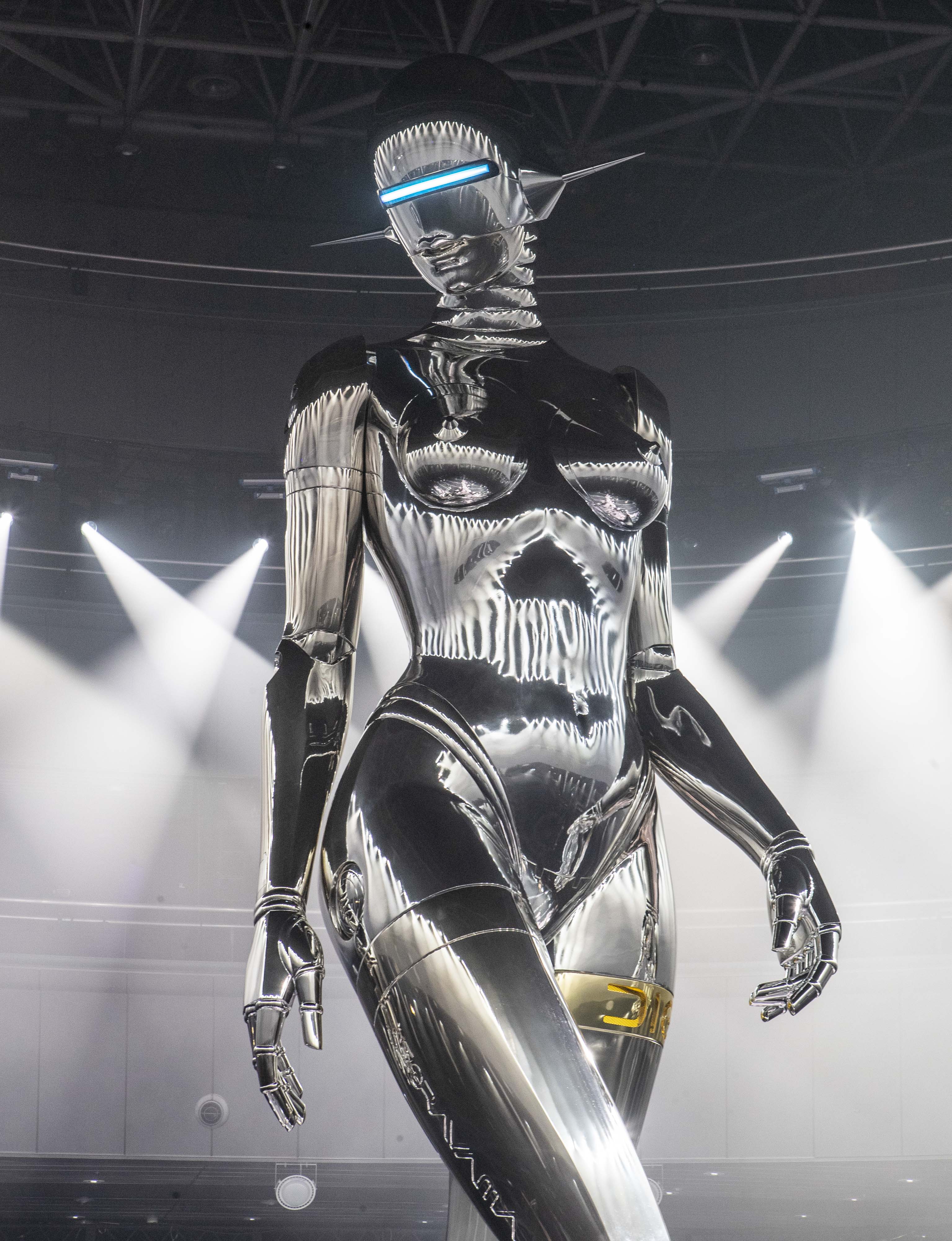
Last summer, after Dior Men’s creative director, Kim Jones, saw an exhibition by Japanese artist Hajime Sorayama at Tokyo’s Nanzuka gallery, he turned up at the artist’s studio that day to propose a collaboration.
Jones—inspired by Sorayama’s meditations on the limitations of desire, which the artist explores through his hyperreal, erotic fembot sculptures, crafted from silver Mylar—felt the artist would be the perfect collaborator on a collection dedicated to Japan’s innovative advancements in AI and robotics.
The resulting pre-fall 2019 collection debuted last November in Tokyo and is now in stores.
“I describe my collaboration with Kim as two weirdos having fun,” says Sorayama, a prominent contemporary talent in his home country. “Kim has great artistic vision. As a creative myself, I could see this from the beginning.”
Japanese culture was a key influence in the work of the French house’s founder, Christian Dior, who conceived his signature wide, knotted sashes after obi belts, and employed draping techniques informed by kimonos for many of his dresses. In carrying this history forward, Jones sought to work with a Japanese artist who could co-create a few pieces of clothing, as well as conceive a runway show that conjured images of an imagined future.
Dior’s pre-fall 2019 laser show, conceived by Hajime Sorayama. Photo courtesy Alessandro Garofalo.
For the collection debut in Tokyo, Sorayama devised a laser show that played out across the bodies of his silver Mylar robots, which were placed around the stage of the venue. In the center, an idealized female form—which Christian Dior celebrated to the point of deification during his lifetime—struck a pose in all her silver glory.
“All my featured artworks for the show portrayed robots,” Sorayama notes. “Some had feminine figures, others were in the shapes of animals or dinosaurs. There were works from every part of my career, ranging from some that were made 40 years ago” until today.
Some of Sorayama’s lesser-known, painted artworks of Japanese foliage and flora are featured as prints on several of the collection’s separates. The artist also created futuristic interpretations of the Dior logotype and insignia, which is included in accessories like keychains, necklaces, rings, and brooches.
A metalized jacket from Dior pre-fall 2019 features featuring Sorayama’s artwork. Photo courtesy Sophie Carre.
The collection also includes fabrics treated with a special metalization technique that casts them in iridescent silvers and metallic blues. Silhouettes are also inspired by Sorayama’s robot armor.
“I personally see my works as forms of entertainment and I believe that it is up to the public to interpret it as art or not,” Sorayama says. “For me, trying to communicate with my contemporaries is crucial. Kim and I have very similar tastes from a creative point of view, and I am very honored and excited to work with one of the most established brands in the world.”
This is not the first time Jones has teamed up with an artist: a month before meeting Sorayama, he presented his very first collection for Dior at the Republican Guard in Paris with sets by KAWS, who also created a graphic iteration of Dior’s bee iconography for several accessories.
Nor is it the first time Sorayama has worked in fashion. The artist has designed capsule collections for designers like Thierry Mugler, for whom he crafted a wearable version of his fembot armor in Mugler’s autumn/winter 1995 collection.